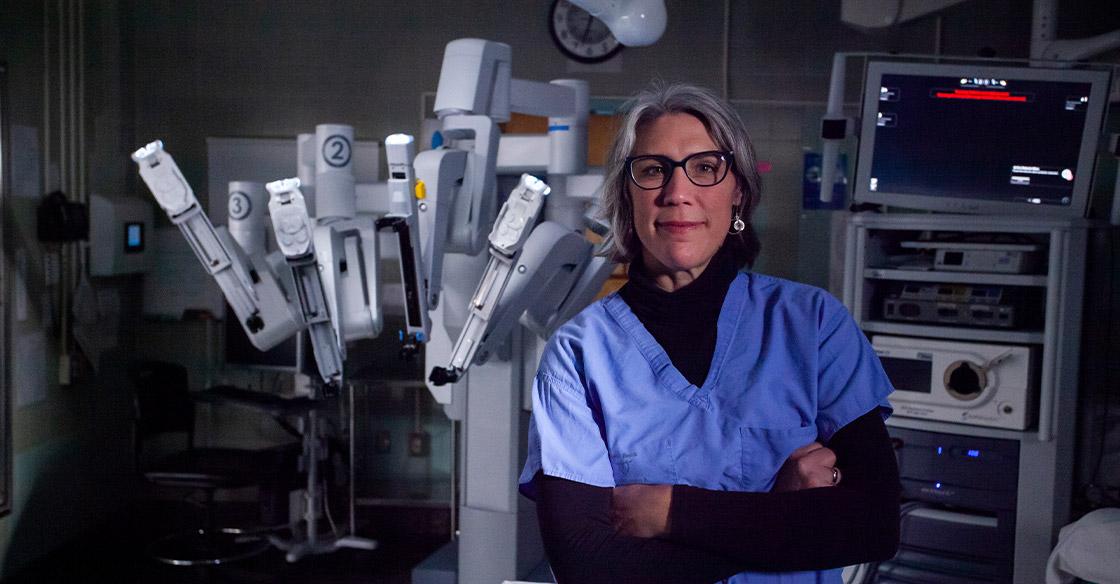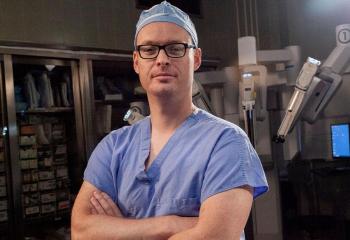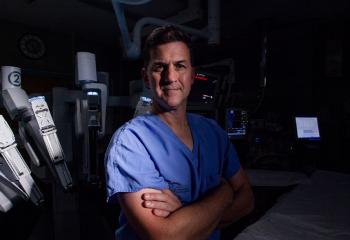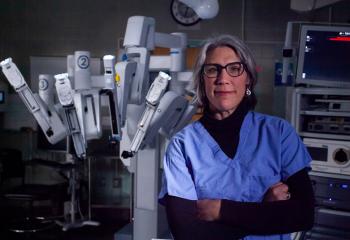
Originally published on thechronicleherald.ca.
At first glance, Alisa Morris could have been playing a high-tech video game.
Her face was pressed into a binocular-viewing pad, her hands were manipulating an elaborate claw-like device and a monitor screen beside her showed what looked like mechanical arms moving around a yellow circle.
Morris actually was trying out a robotic surgery demonstration machine called the da Vinci Xi with the help of specialist Johnny Farah of Minogue Medical.
“Yeah, there you go. Now you have better reach, that’s going to help you reach those really really tight areas that surgeons experience in a complex case,” Farah encouraged Morris, who works in the perioperative care department at the Halifax Infirmary.
“That was so fun,” Morris said after yielding the controls to a friend amid the hubbub of a packed infirmary lobby. “The movement is very seamless, it’s just like moving your own hand.”
“This is the future of health care. ... While it’s tremendously important for our patients today it’s only the tip of the wedge for more development in advanced technology for the next 10 to 30 years. It’s a huge deal.” - Bill Bean, CEO of QEII Health Foundation
Many of the procedures have been for prostate and uterine cancers, as well as partial nephrectomies, which involve the removal of part of the kidney. The four surgeons are supported by a nursing team of about six people. Many physicians get robotic surgery training in their residencies and Minogue Medical, the Canadian vendor for the da Vinci robot, also provides education and training on that machine for NSHA staff, Dunnington said.
“This is the future of health care,” said Bill Bean, CEO of the QEII Health Foundation, in an interview. “And so while it’s tremendously important for our patients today it’s only the tip of the wedge for more development in advanced technology for the next 10 to 30 years. It’s a huge deal.”
The foundation is so far footing the entire bill for the robotic surgery program, which will cost $8.1 million over the next five years.
It was announced at the event that the Sobey family has given $3 million toward the effort, making for a total of $5.3 million in donations. The foundation will be reaching out to the community as the campaign goes on to make up that $2.8-million shortfall, Bean said.
The robotic surgery program at the QEII, the first in Atlantic Canada, has also been a boon for the recruitment of top surgeons, urology chief Greg Bailly told the gathering.
“In the past couple of years, we’ve been able to recruit at least four surgeons in four different specialties who have robotic experience in their fellowship training including urology, thoracic surgery, gynecology and ear nose and throat,” said Bailly, who also heads the QEII robotics council.
“Without a doubt, surgical robotics have played a key role in recruiting these individuals.”
For more information on the QEII Health Foundation’s robotic surgery campaign, go to https://qe2foundation.ca/current-priorities/surgical-robotics.


